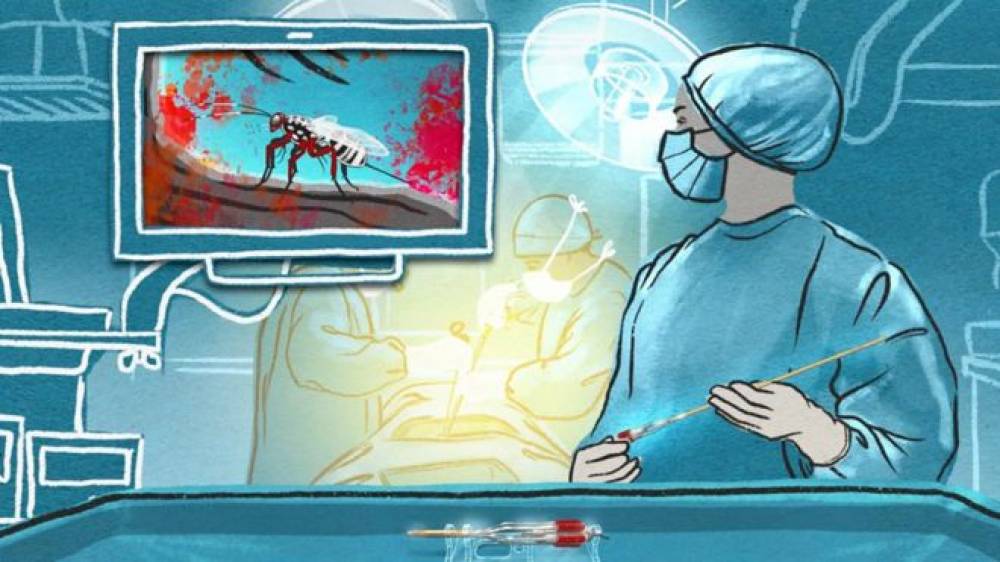
A breakthrough in AI could spark a medical revolution
A breakthrough in AI could spark a medical revolution
Almost every protein produced by the human body has its structure predicted using artificial intelligence.
Along with other applications, the development could help accelerate the discovery of new drugs to treat disease.
Proteins are critical components of living organisms; each cell in our bodies is densely packed with them.
Understanding the shapes of proteins is critical for medical advancement, but only a small fraction of these have been determined to date.
The researchers predicted the structures of 350,000 proteins from humans and other organisms using a program called AlphaFold.
Our genomes - the DNA found in the nuclei of human cells - contain the instructions for producing human proteins.
The human genome expresses approximately 20,000 of these proteins. Biologists collectively refer to this complete complement as the "proteome."
Dr Demis Hassabis, chief executive and co-founder of artificial intelligence company Deep Mind, commented on the AlphaFold results: "We believe it is the most comprehensive and accurate representation of the human proteome available to date.
"This work, we believe, is the most significant contribution that AI has made to the advancement of scientific knowledge to date.
"And I believe it is an excellent illustration and demonstration of the type of benefits that AI can bring to society." "We're just so excited to see what the community does with this," he added.
Proteins are constructed from chains of smaller amino acid building blocks. These chains can be folded in an infinite number of ways to create a unique three-dimensional shape. The shape of a protein dictates its function in the human body.
Prediction of AlphaFold
AlphaFold's 350,000 predicted protein structures include not only those found in the human proteome, but also those found in model organisms used in scientific research, such as E. coli, yeast, the fruit fly, and the mouse.
This quantum leap in capability is described in the prestigious journal Nature by DeepMind researchers and a team from the European Molecular Biology Laboratory (EMBL).
AlphaFold was able to predict the structural positions of 58 percent of the amino acids in the human proteome with confidence.
35.7 percent of the positions were predicted with a high degree of confidence - more than double the number confirmed experimentally.
X-ray crystallography, cryogenic electron microscopy (Cryo-EM), and others are all traditional techniques for deciphering protein structures. However, none of these are simple to accomplish: "Structures require a tremendous amount of money and resources," Prof John McGeehan, a structural biologist at the University of Portsmouth, told BBC News.
As a result, 3D shapes are frequently determined as part of targeted scientific investigations, but no project has ever determined the structures of all the proteins produced by the body in a systematic manner.
Indeed, only 17% of the proteome has an experimentally confirmed structure.
Prof McGeehan stated the following in response to AlphaFold's predictions: "It's simply the speed - the fact that it used to take us six months to complete a structure and now takes only a few minutes. We could not have predicted it would happen so quickly."
"When we initially sent our seven sequences to the DeepMind team, we already had experimental structures for two of them. As a result, we were able to test those upon their return. To be honest, it was one of those moments when the hairs on the back of my neck stood up because the structures produced by [AlphaFold] were identical."
Prof Edith Heard of EMBL stated the following: "This will fundamentally alter our perception of how life works. That is because proteins are the basic building blocks of living organisms."
"The applications are only limited by our comprehension."
These applications include the development of new drugs and treatments for disease, the design of future crops that are resistant to climate change, and the development of enzymes that degrade the plastic that pervades the environment.
Prof McGeehan's group is already utilizing AlphaFold data to aid in the development of faster enzymes for plastic degradation. He stated that the program predicted the structures of proteins of interest that could not be determined experimentally, thereby accelerating their project by "multiple years."
Dr Ewan Birney, director of the European Bioinformatics Institute at EMBL, described the AlphaFold predicted structures as "one of the most significant datasets since the human genome was mapped."
DeepMind has partnered with EMBL to make the AlphaFold code and predicted protein structures freely available to the global scientific community.
Dr Hassabis stated that DeepMind intended to significantly expand the database's coverage to nearly every sequenced protein known to science - more than 100 million structures.

